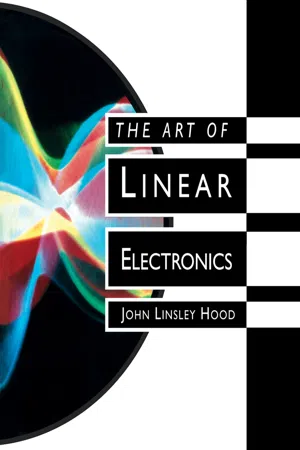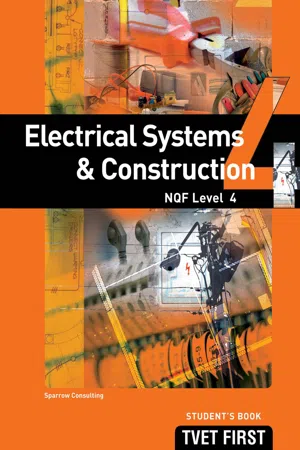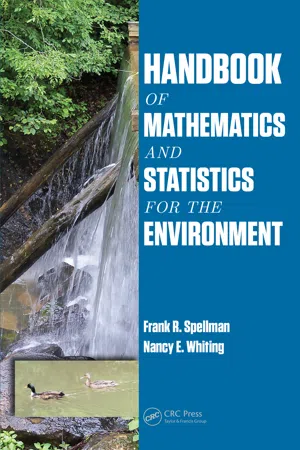Physics
Circuit Symbols
Circuit symbols are graphical representations used to depict various electrical and electronic components in circuit diagrams. These symbols provide a standardized way to communicate the presence and function of components such as resistors, capacitors, and power sources in a circuit. By using circuit symbols, engineers and technicians can easily understand and interpret circuit diagrams.
Written by Perlego with AI-assistance
Related key terms
1 of 5
6 Key excerpts on "Circuit Symbols"
- eBook - PDF
- John Linsley Hood(Author)
- 2013(Publication Date)
- Butterworth-Heinemann(Publisher)
Introduction The normal way by which an electronics engineer will explore the function of an electronic circuit, or will describe his own designs, is by way of a 'theoretical' circuit drawing. In order to be able to understand what he sees or to be able to make his own drawings, it is necessary for him to know what the conventional Circuit Symbols mean, and which symbols are appro-priate for a given device. It is all too often taken for granted that the reader will understand this, without further explanation. This can be frustrating if some of the symbols used are unfamiliar, or if unexplained conventions are em-ployed as a means of simplifying the drawing. I have therefore tried, in the following pages, to show the most common graphical forms by which specific components are represented. Although there is a fairly wide agreement on these styles, individual design offices may still employ symbols which are unique to themselves, where some guesswork may be needed. The experienced engineer can skip this chap-ter without loss. 1 Electronic component symbols and circuit drawing Basic design philosophy The purpose of a circuit drawing is to give a rapid visual explanation to the viewer of how the circuit works, and how the individual component parts relate to one another. Unfortunately, in practice, drawings are often made with the sole aims of showing the connections between the components in an accurate manner and of producing a neat looking final result. Whether or not the actual interconnections are easy to follow, or how readily the engineer can discover the way the circuit operates, may not be a particularly high priority at the time the drawing is made. Certain ground rules will help to keep the drawing simple in appearance and easy to follow. These are: 1. Adopt a consistent policy for the flow direction of signals, such as 'inputs' on the left-hand side of the drawing, moving across to 'outputs' on the right-hand side. - Mark Brown, Jawahar Rawtani, Dinesh Patil(Authors)
- 2004(Publication Date)
- Newnes(Publisher)
2 Devices, symbols, and circuits Objectives 9 To understand basic electrical symbols 9 To understand power and control circuits 9 To read electrical drawings. 2.1 Devices and symbols Any electrical drawing representing an electrical installation or a circuit takes the help of specific symbols to represent various electrical devices in shorthand. This provides a quick idea to the reader about a circuit or installation, and is particularly useful while troubleshooting. Therefore, it is important to familiarize oneself with various symbols. Some of the commonly used device symbols are detailed in the following section and in Figure 2.1. 2.2 Electrical circuits Electrical circuits are circuits used to interconnect different electrical equipments together to enable the working of an electrical device. Electrical schematics are commonly classified into power circuit and control circuit. A power circuit consists of the main power device (a motor, a generator, or other power devices) along with heavy power conductors, contactors, protection devices. A control circuit consists of switches, field device contacts, timers, relay coils, relay contacts, protection devices, and light power conductors. 2.2.1 Power circuits Power circuits are required for carrying power to or from heavy electrical equipments like motors, alternators, or any electrical installation. They carry out the following functions 9 Isolation using devices such as isolators, linked switches and circuit breaks. 9 Circuit control using devices such as contactors, motor circuit breakers, etc. 9 Protection against overload and short-circuits using thermal overload relays, electro-magnetic relays, circuit breakers, with releases, fuses, etc. OR OR -4 f~- / --I z i-- Resistance Variable resistor Impedance Winding, coil or choke Current transformer Devices, symbols, and circuits 25 I1,~ Capacitor I I OR Fuse IF----IF-- Battery Instrument shunt I.- eBook - PDF
- Sparrow Consulting(Author)
- 2014(Publication Date)
- Macmillan(Publisher)
Unit 2.4: Construct a three-phase circuit. Unit 2.5: Evaluate the circuit and installation. Unit 2.6: Complete the task by compiling drawings, operating procedures and specifications of the design. 49 Module 2: Design and construct a three-phase circuit Introduction A circuit diagram is a two-dimensional drawing used to represent an electrical circuit. It shows the different components of a circuit as standard symbols, and it shows how they are connected. Circuit diagrams are used for designing circuits and for the construction and maintenance of electrical equipment. Unit 2.1: Electrical symbols and components Electrical symbols are used to show the components of an electrical circuit, and how they are connected together. Symbols may appear in different designs or colours used by the person or company that produces the circuit diagram. To read, interpret and draw a circuit diagram you must know what each symbol represents. Therefore, this unit shows some common symbols used in electrical systems. These symbols are regulated by standards organisations such as the IEC (International Electrotechnical Commission) and may change from time to time as a result of recommendations by users, manufacturers or other interested parties. The standard used is IEC 60617, Graphical Symbols for Diagrams. The commonly used symbols are those used to represent: • Voltage and current (AC and DC). • Resistance . • Inductance. • Capacitance. Power and power supply symbols Table 2.1: Symbols used for power sources Component Symbol Description Cell or battery A cell or battery supplies electrical energy. The larger terminal (left) is positive and the shorter terminal is negative. A battery consists of more than one cell joined together. DC supply DC stands for direct current. It is electrical energy that always flows in one direction. AC supply AC stands for alternating current. It is electrical energy that continually changes direction. - eBook - PDF
- Michael Brumbach(Author)
- 2016(Publication Date)
- Cengage Learning EMEA(Publisher)
1 C H A P T E R 1 Language of Electricity O B J E C T I V E S After studying this chapter, the student will be able to: ■ Explain the purpose of electrical symbols and drawings. ■ List three main categories of electrical symbols and drawings. ■ Identify and draw from memory some common electrical symbols. ■ Use electrical symbols to construct electrical drawings. ■ Use scientific and engineering notation. One of the greatest accomplishments of humanity is the development of systems of symbols for communication. The modern English alphabet is a set of 26 symbols, called letters, which convey information when combined in the proper order. Our number system is a set of 10 symbols, which can be used individually or grouped to represent small quantities or large quantities. Symbols used in arithmetic indicate the operation to be performed. For example, the symbol 1 indicates addition and the symbol 3 indicates multiplication. Another set of symbols known as shorthand enables stenographers to write words at a rapid pace. Copyright 2017 Cengage Learning. All Rights Reserved. May not be copied, scanned, or duplicated, in whole or in part. Due to electronic rights, some third party content may be suppressed from the eBook and/or eChapter(s). Editorial review has deemed that any suppressed content does not materially affect the overall learning experience. Cengage Learning reserves the right to remove additional content at any time if subsequent rights restrictions require it. 2 CHAPTER 1 ELECTRICAL SYMBOLS There are many different types of symbols used in electrical drawings. These symbols are used to con-vey meaning, while conserving drawing space. It is important for you to become familiar with these symbols so that you can read and interpret electri-cal drawings. Table 1–1A shows some of the typical symbols used to represent power sources and grounds. Table 1–1B shows the symbols used to represent overcurrent protective devices such as fuses and circuit breakers. - Frank R. Spellman, Nancy E. Whiting(Authors)
- 2013(Publication Date)
- CRC Press(Publisher)
A schematic diagram (usually shortened to “schematic”) is a simplified drawing that represents the electrical, not the physical, situation in a circuit. The symbols used in schematic diagrams are the electrician’s shorthand; they make the diagrams easier to draw and easier to understand. Consider the symbol used to represent a battery power supply (see Figure 11.20). The symbol is rather simple and straightforward but is very important; for example, by convention, the shorter line in the symbol for a battery represents the negative terminal. It is important to remember this, because it is sometimes necessary to note the direction of current flow, which is from negative to positive, when examining a schematic. The battery symbol shown in Figure 11.20 has a single cell, so only one short and one long line are used. The number of lines used to represent a battery vary (and they are not necessarily equivalent to the number of cells), but they are always in pairs, with long and short lines alternating. In the circuit shown in Figure 11.19, the current would flow in a coun-terclockwise direction—that is, opposite the direction that the hands of a clock move. If the long and short lines of the battery symbol (symbol shown in Figure 11.20) were reversed, the current in the circuit shown in Figure 11.19 would flow clockwise —that is, in the direction that the hands of a clock move. Ba ttery + – Resistor (R ) Switch open FIGURE 11.18 Open circuit. Ba ttery + – Fuse Resistor (R) FIGURE 11.19 Simple fused circuit. + – FIGURE 11.20 Schematic symbol for a battery. 259 Fundamental Engineering Concepts Note: In studies of electricity and electronics, many circuits are analyzed that consist mainly of specially designed resistive components. As previously stated, these components are called resistors .- Paul Rosenberg(Author)
- 2004(Publication Date)
- Audel(Publisher)
Chapter 3 Electrical Symbols Throughout this course and all through your career as an electri-cian, you will have need for “electrical symbols.” They will be used in schematics, drawings, and numerous other places. This chapter is inserted at this point so that you might familiarize yourself with the meaning of these symbols and know where to look to find the meaning when you come across symbols. The total coverage of electrical and electronic symbols may be obtained from American National Standards Institute, Inc., 25 W. 43rd St., New York, N.Y. 10036. Try to familiarize yourself with the following symbols so that you will recognize them, and thus avoid rereading many explana-tions in this text. Graphic Electrical Wiring Symbols Compiled by American Standard Graphic, electrical wiring symbols for architectural and electrical layout drawings. 0.1 Drafting Practices Applicable to Graphic Electrical Wiring Symbols A. Electrical layouts should be drawn to an appropriate scale or figure dimensions noted. They should be made on draw-ing sheets separate from the architectural or structural draw-ings or on the drawing sheets for mechanical or other facilities. Clearness of drawings is often reduced when all different electric systems to be installed in the same building area are laid out on the same drawing sheet. Clearness is further reduced when an extremely small drawing scale is used. Under these circumstances, each or certain of the different systems should be laid out on sepa-rate drawing sheets. For example, it may be better to show signal system outlets and circuits on drawings separate from the lighting and power branch circuit wiring. B. Outlet and equipment locations with respect to the building should be shown as accurately as possible on the electrical drawing sheets to reduce reference to architectural drawings. Where extremely accurate final location of outlets and 21 22 Chapter 3 equipment is required, figure dimensions should be noted on the drawings.
Index pages curate the most relevant extracts from our library of academic textbooks. They’ve been created using an in-house natural language model (NLM), each adding context and meaning to key research topics.





